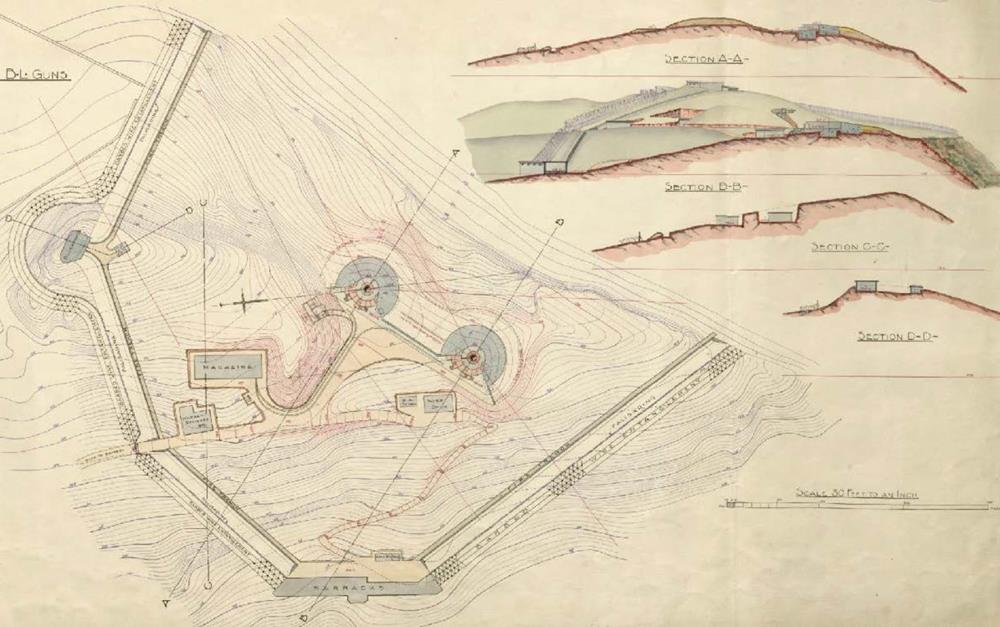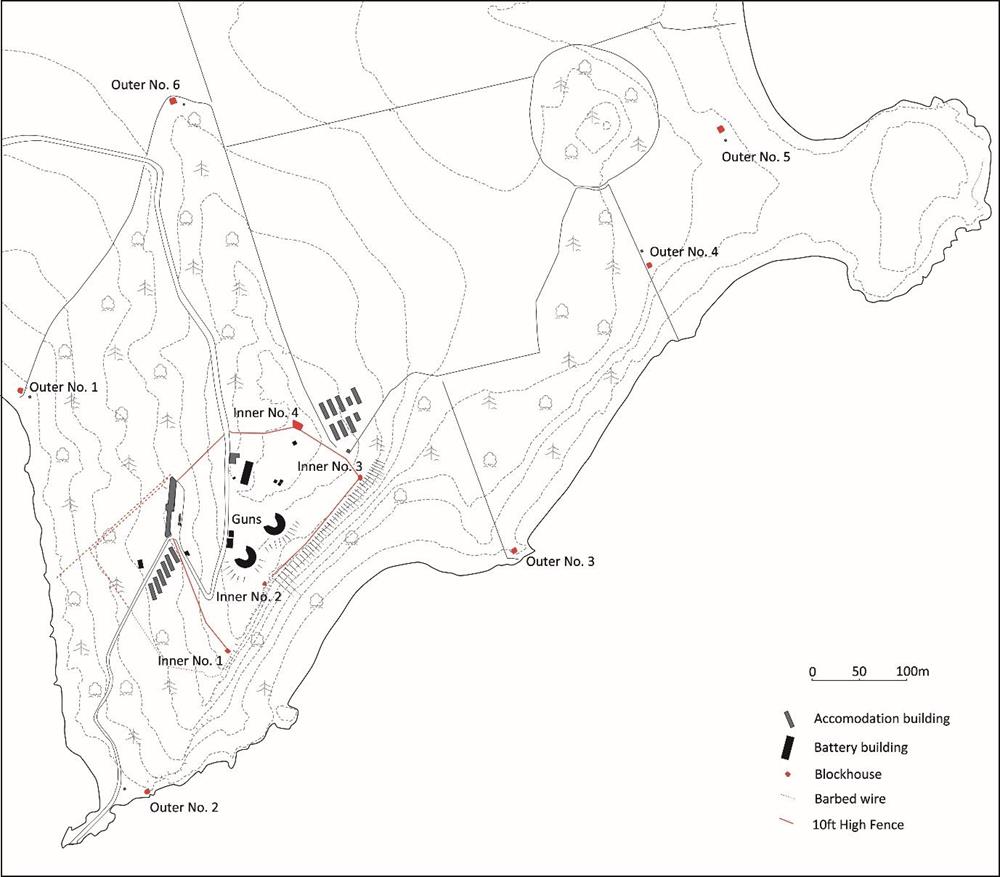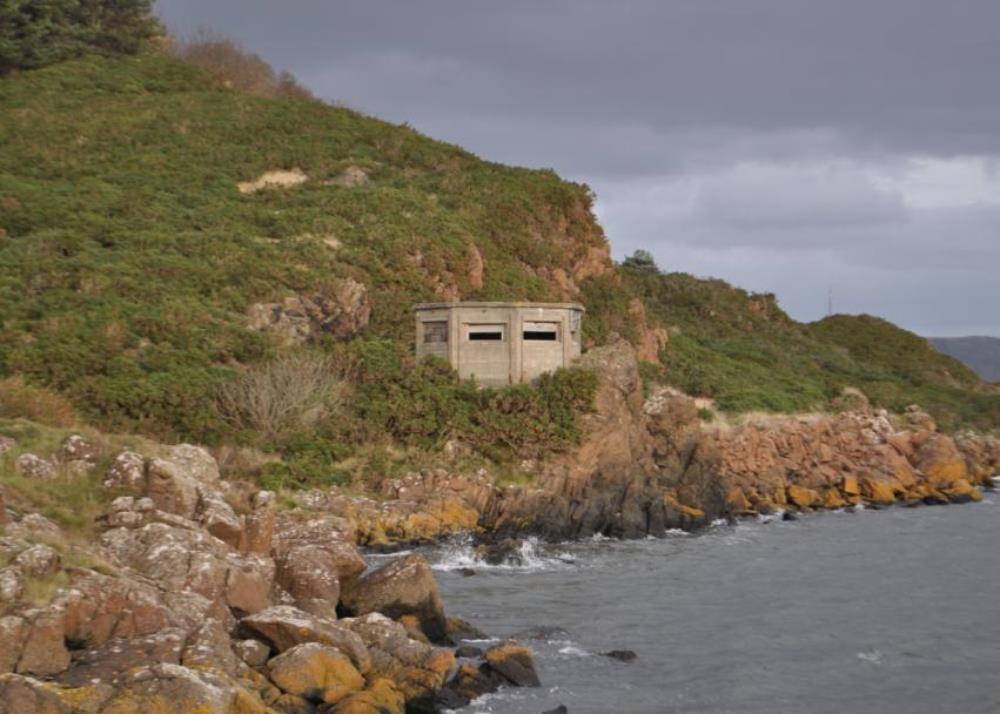Anti-invasion defences – Braefoot Battery
| < Downing Point Battery | Δ Index | RNAD Crombie & Rosyth > |
The landward defences of the 9.2-inch battery at Braefoot were included in the initial designs drawn up in 1912 and seem to have been built largely according to the plans, in 1914–15.
 The original 1912 plans for the battery and its defences at Braefoot
The original 1912 plans for the battery and its defences at Braefoot
The battery had a defended perimeter comprising, from inside out, a firing trench, a ‘palisade’ fence, and a barbed wire entanglement. The barracks for the Regular garrison of the battery was incorporated in the perimeter, and the outward facing side and both end walls were loop-holed for defence. The construction plan shows the location of a single blockhouse on the highest point of the perimeter (which was also the highest point on the site).
 Plan of the defences of Braefoot, as they had developed by 1918
Plan of the defences of Braefoot, as they had developed by 1918
We are fortunate that in 1918 the battery site was mapped in detail by the Ordnance Survey for the War Office, even though it was by then disarmed. Although the original defensive perimeter still existed, two large camps had been built to accommodate the wartime garrison and these were enclosed within a larger barbed-wire fence. By 1918 there were ten blockhouses, four in an inner and six in an outer line .
 Braefoot blockhouse No. 2 in the Braefoot outer line
Braefoot blockhouse No. 2 in the Braefoot outer line
| < Downing Point Battery | Δ Index | RNAD Crombie & Rosyth > |